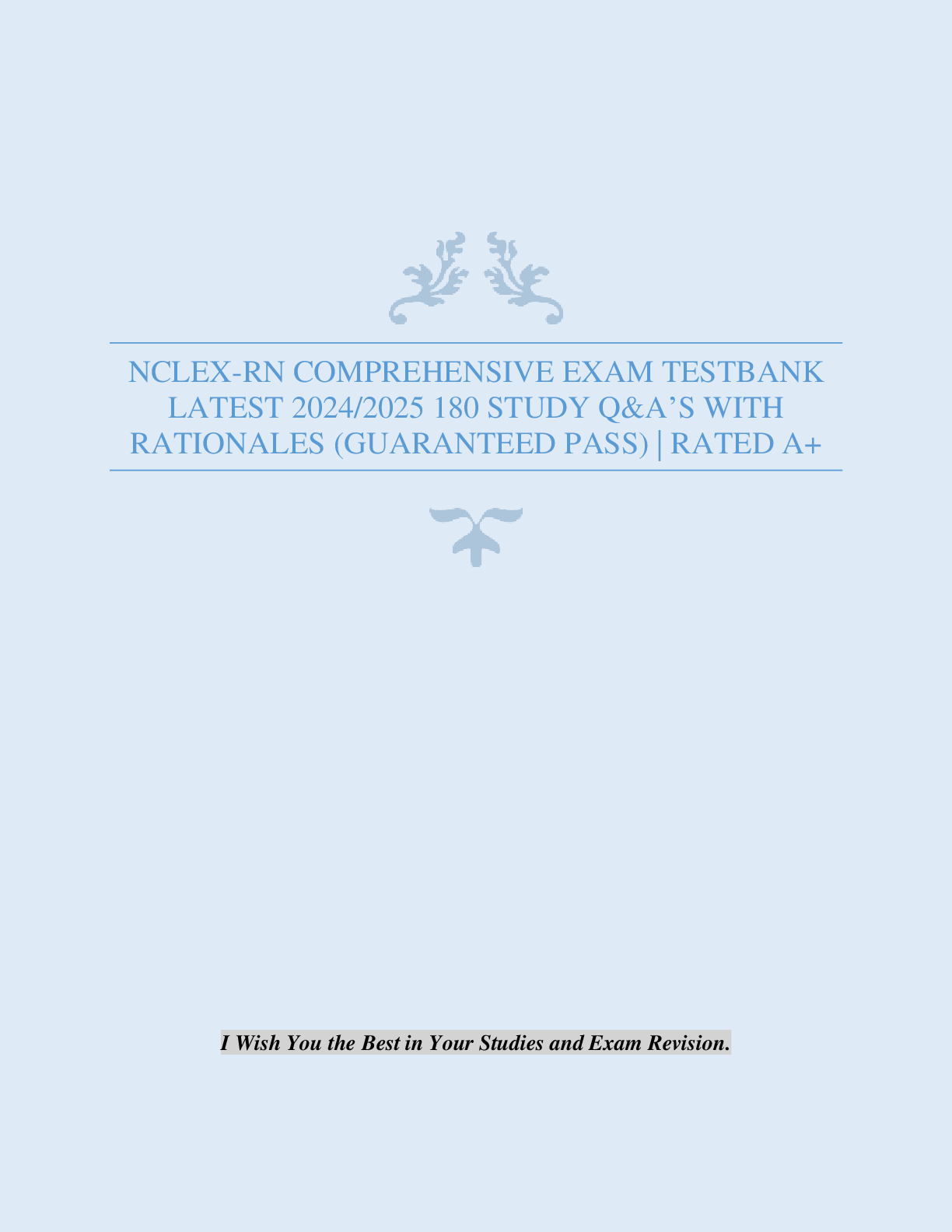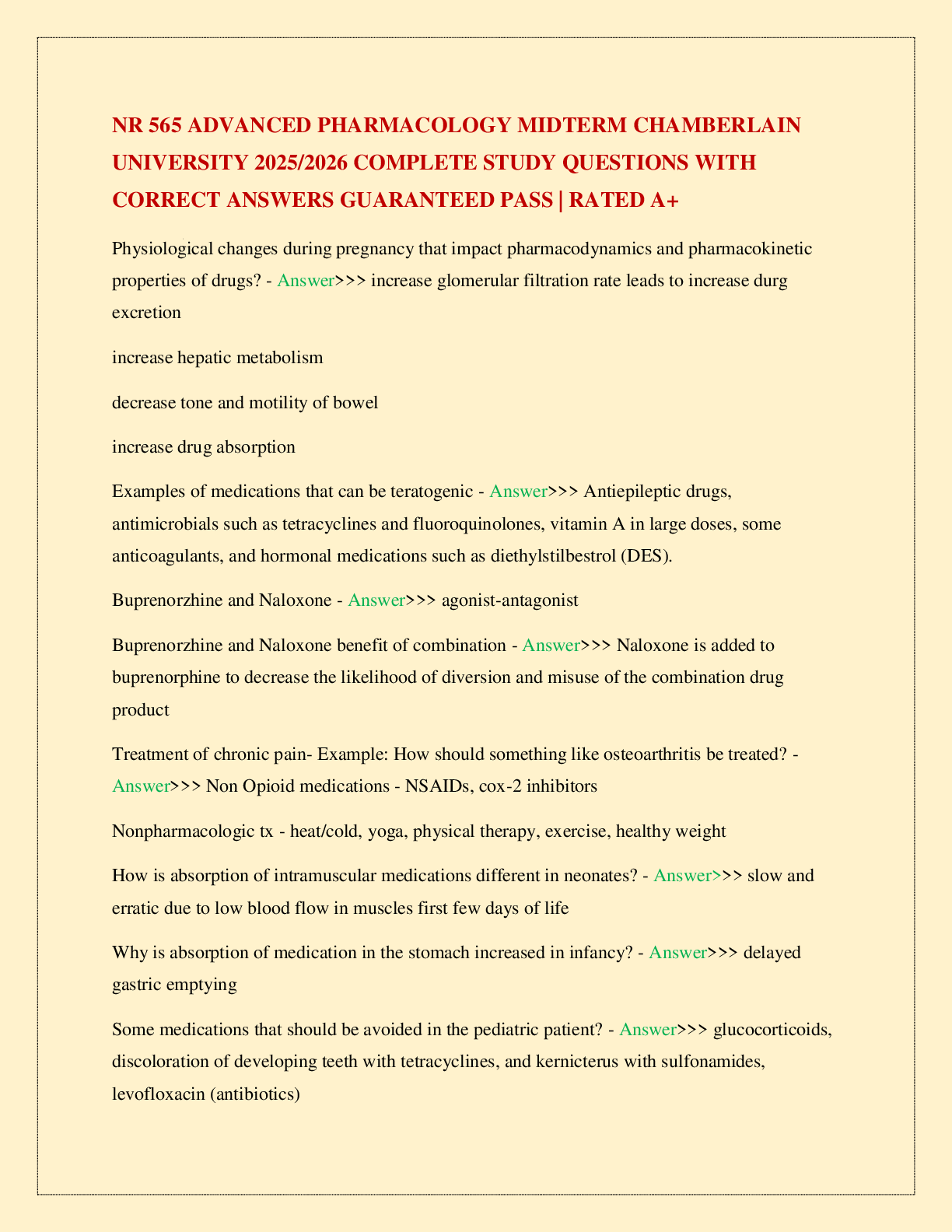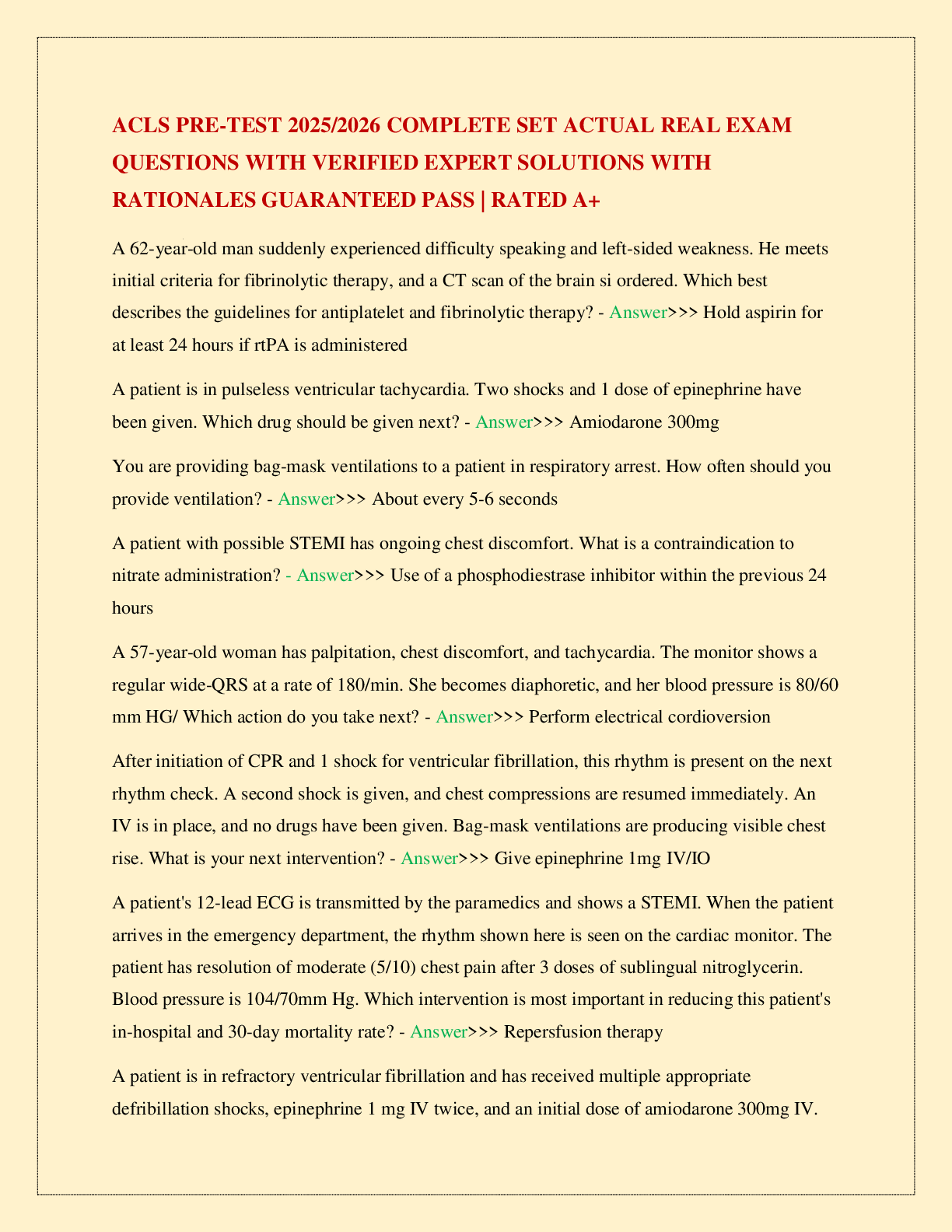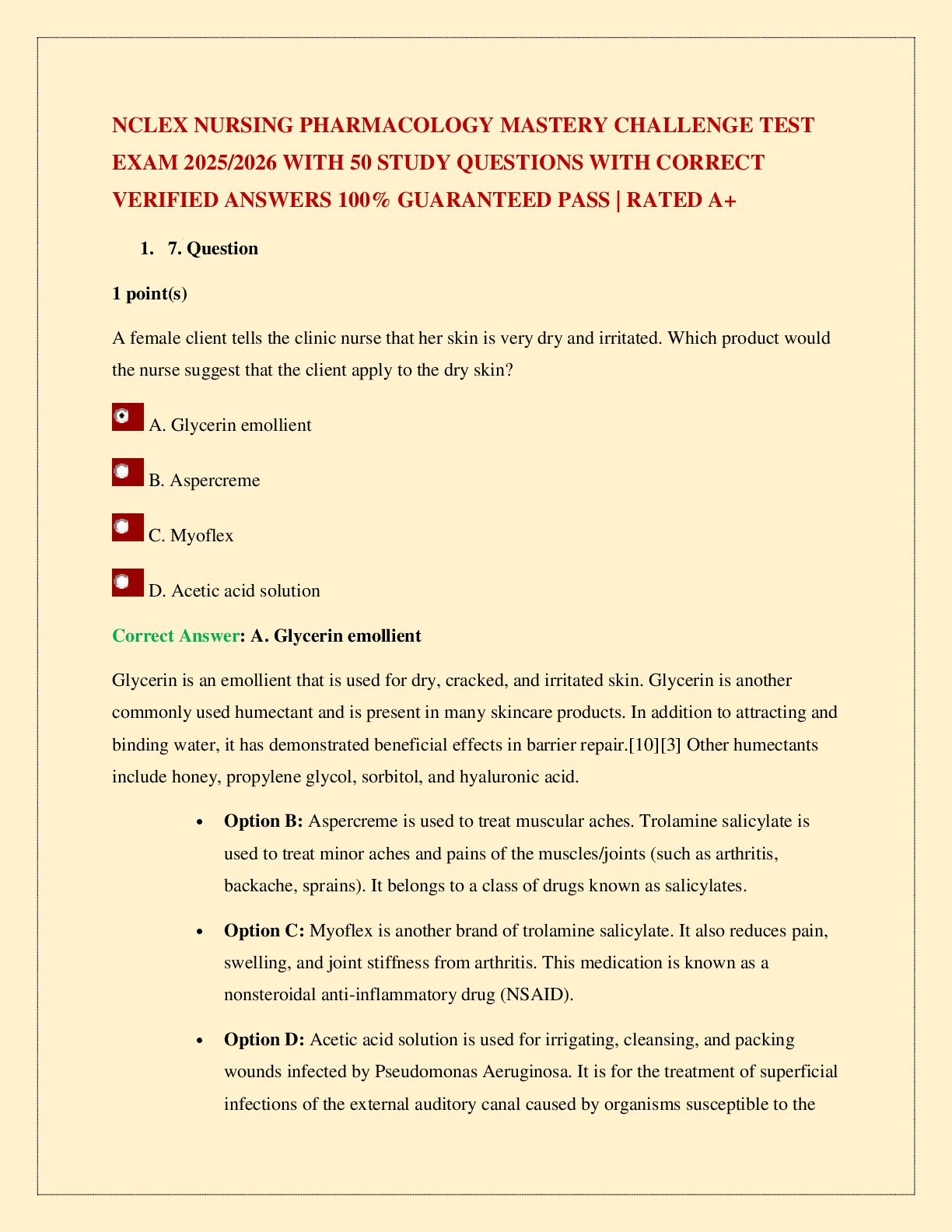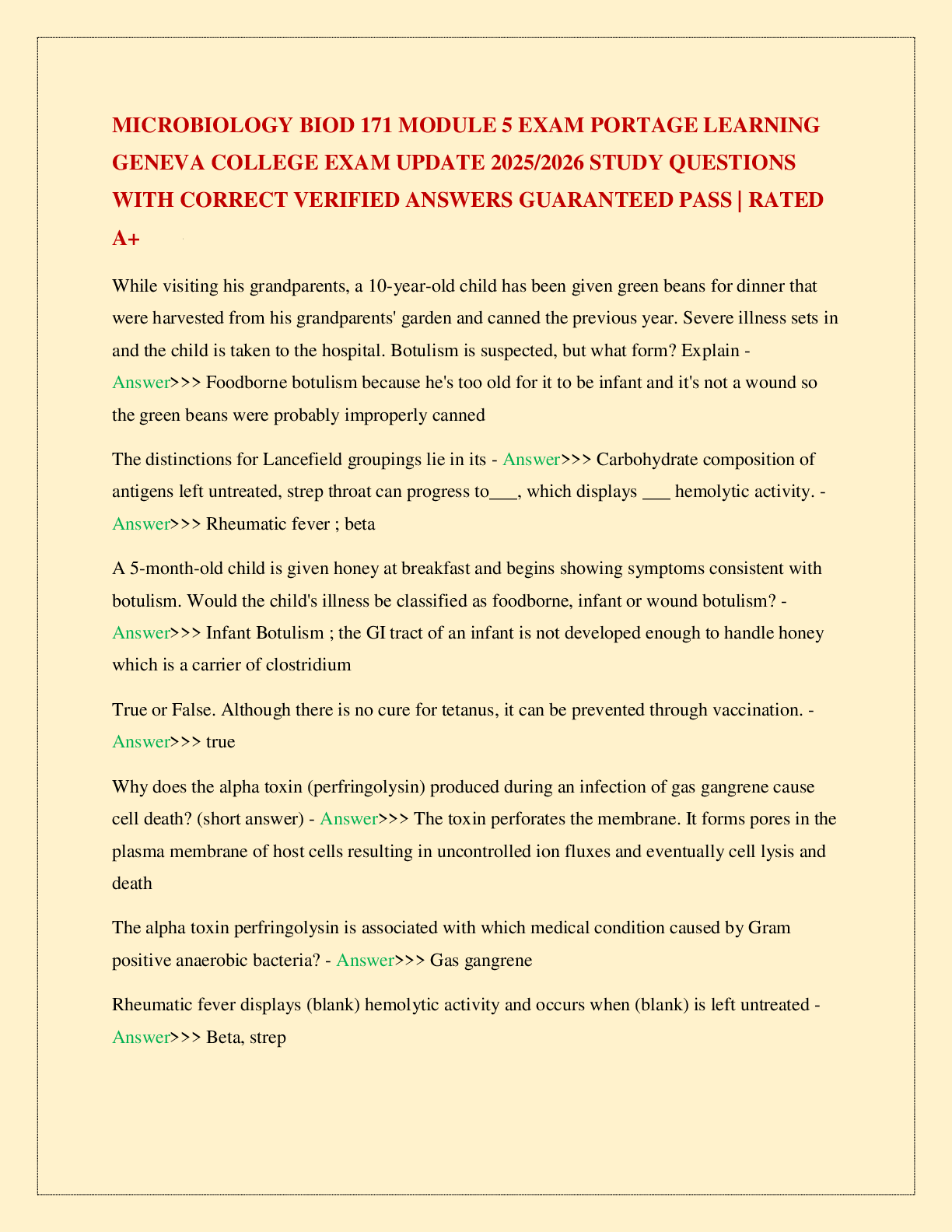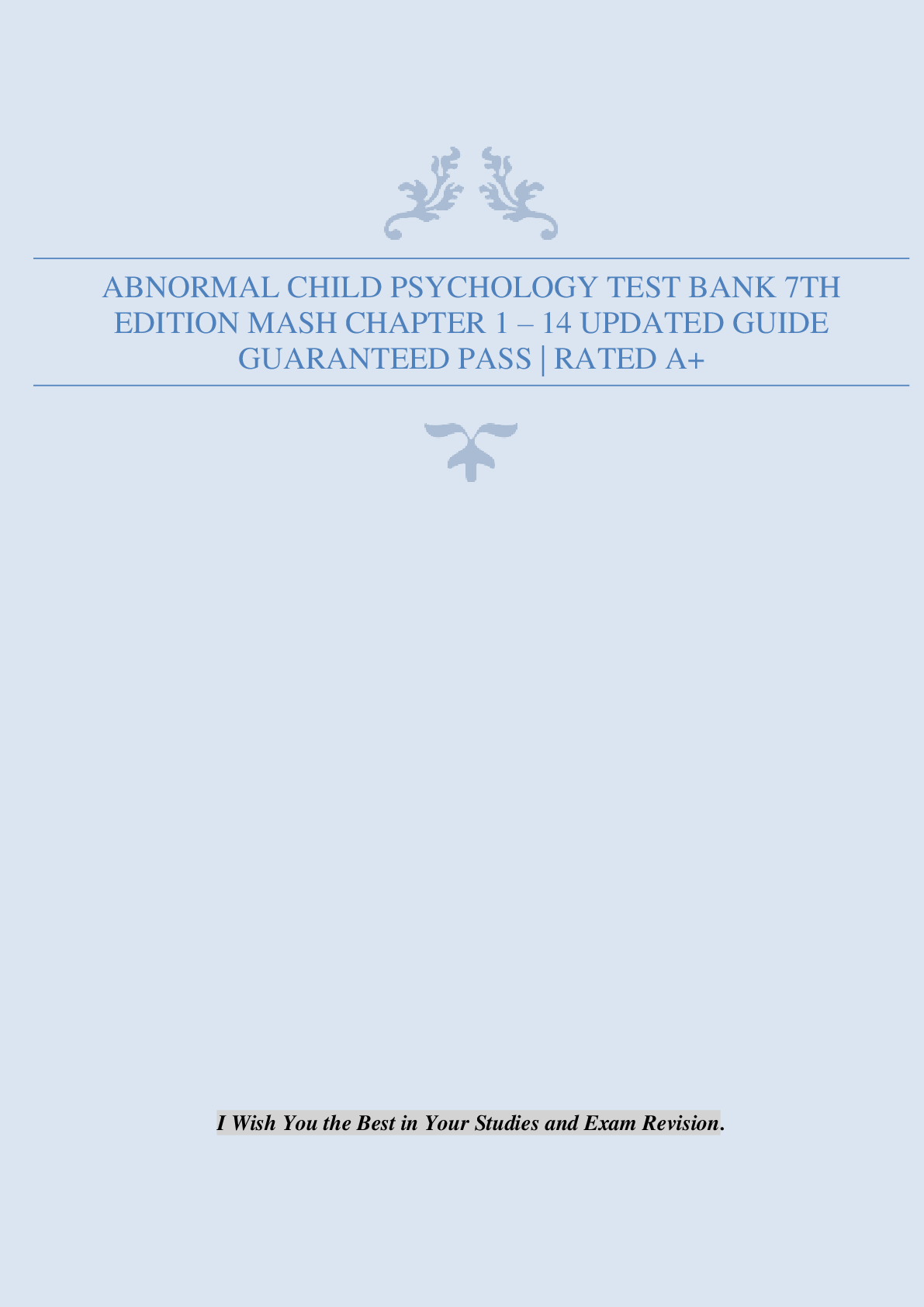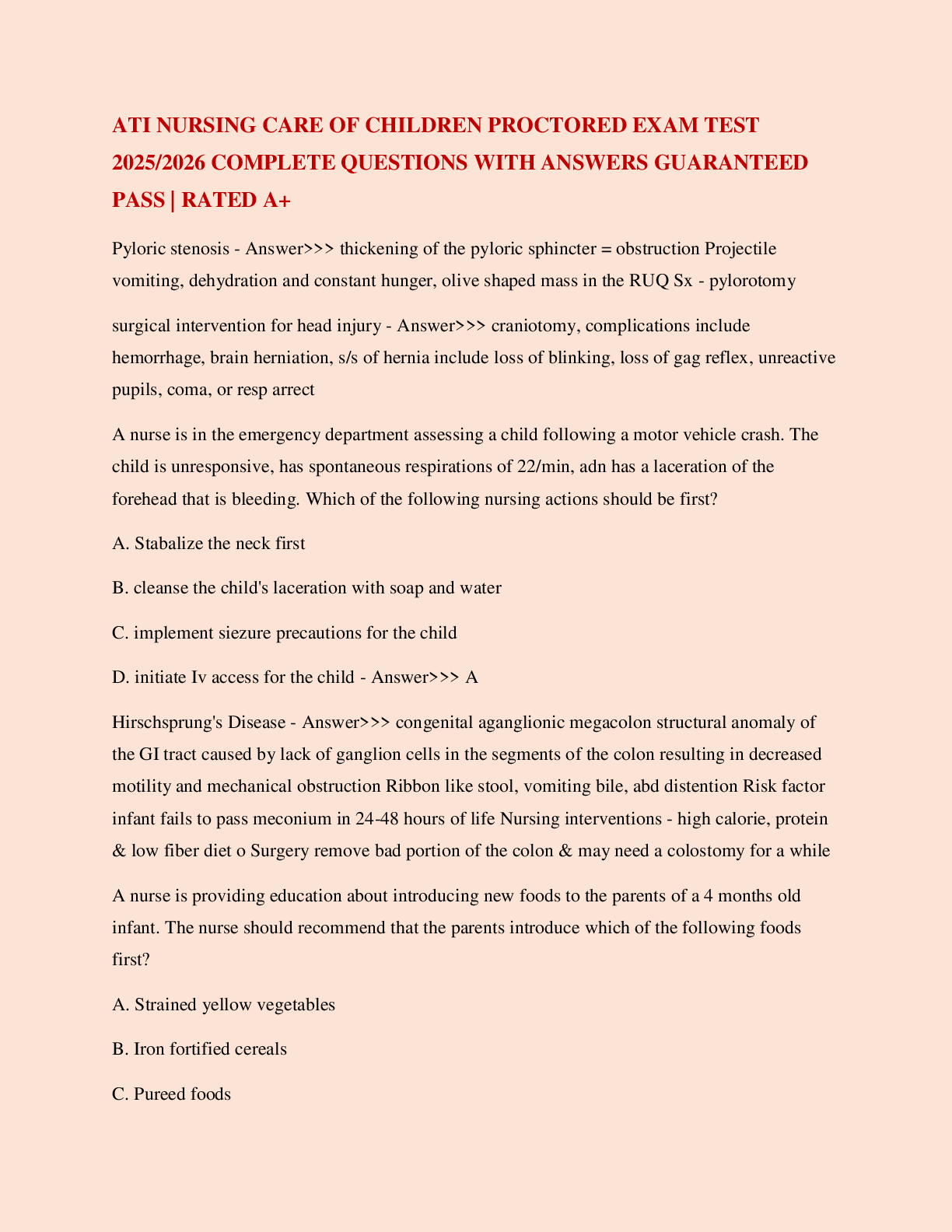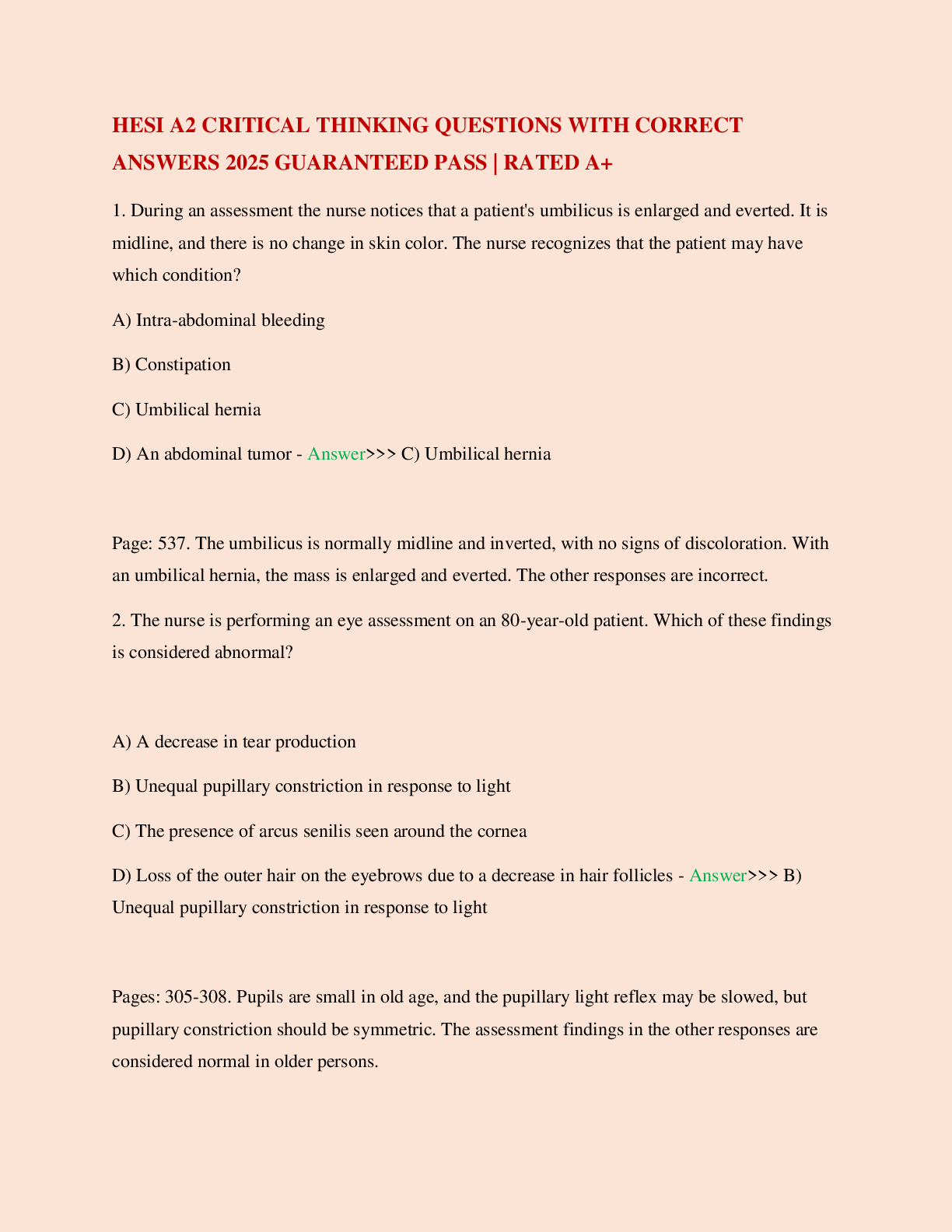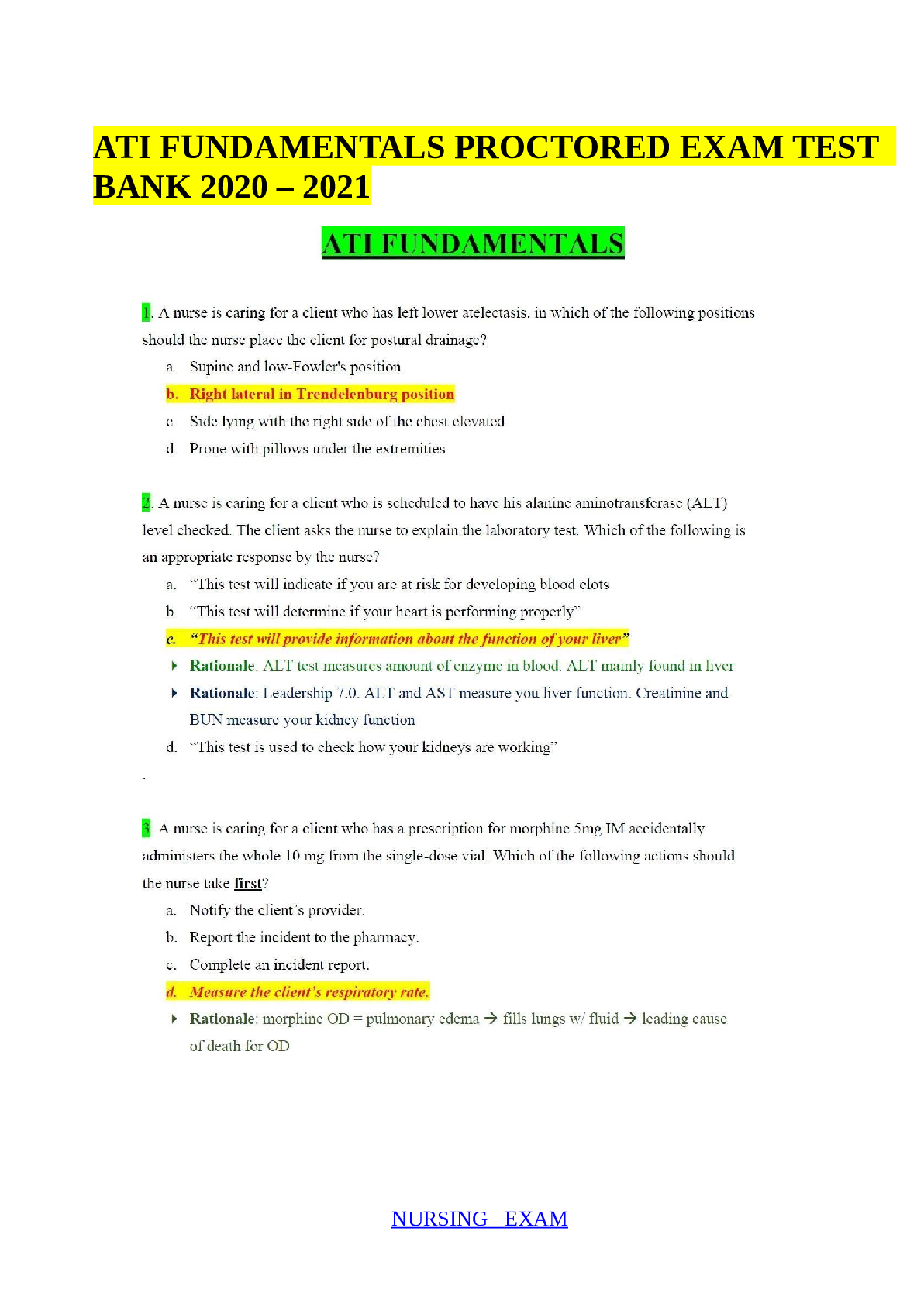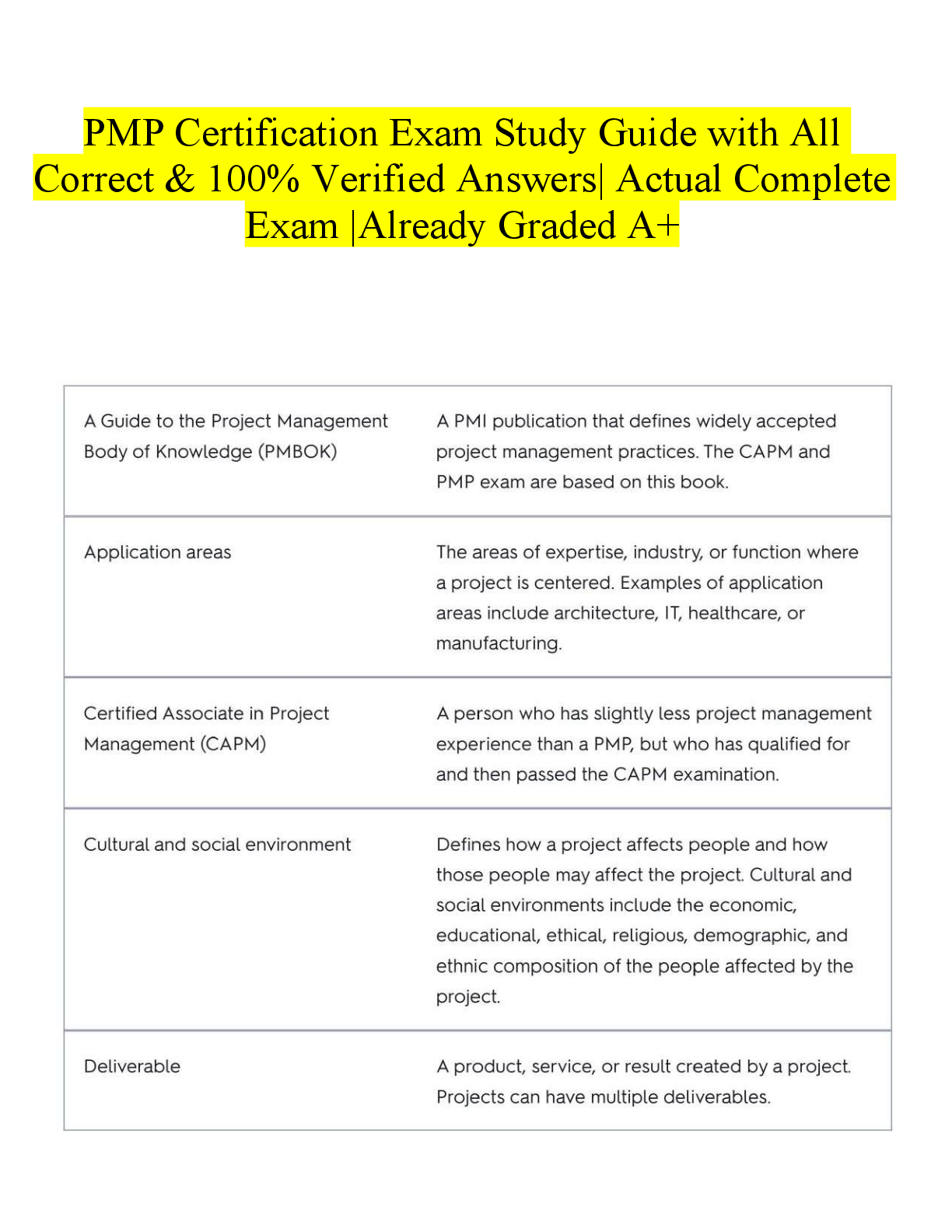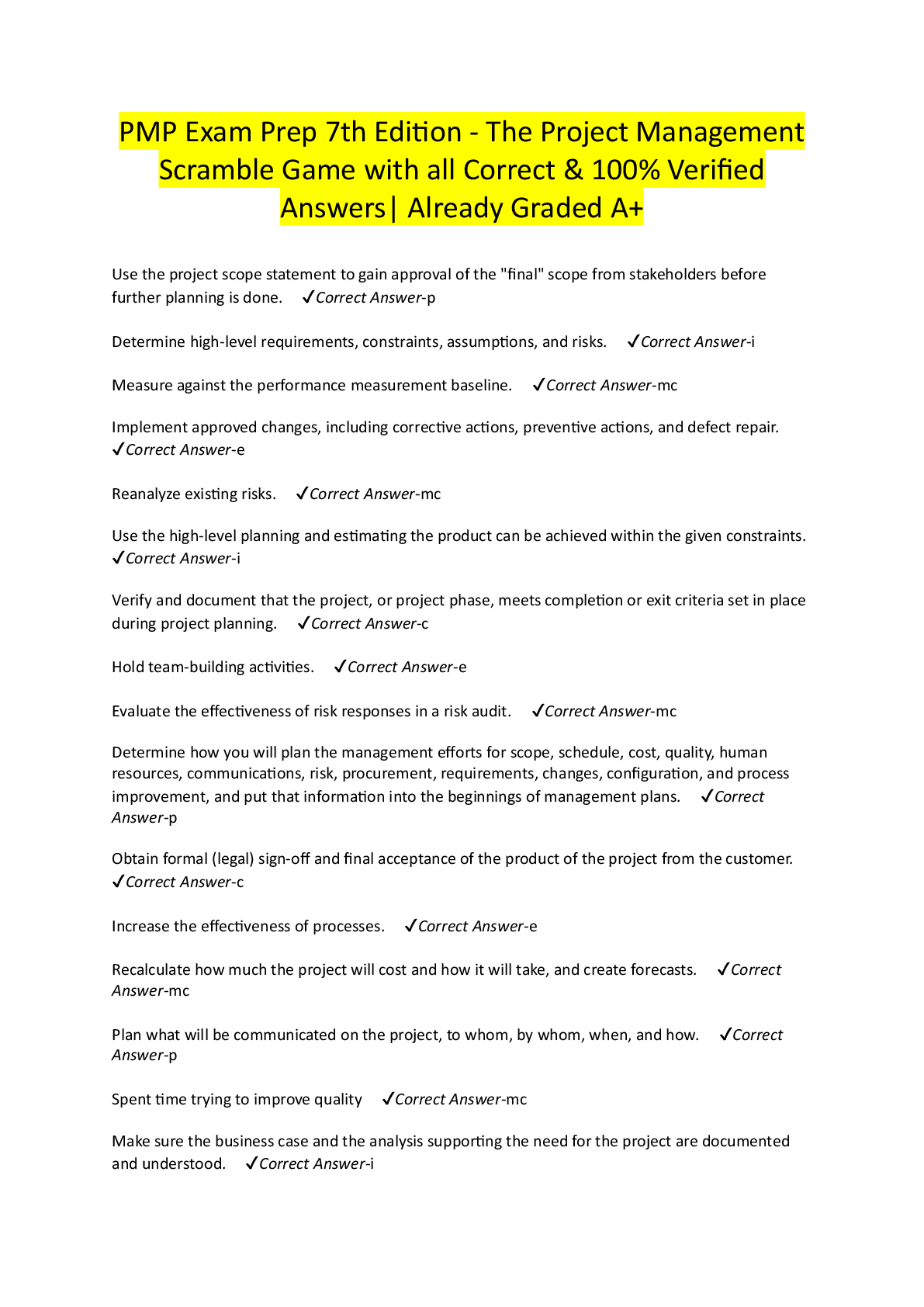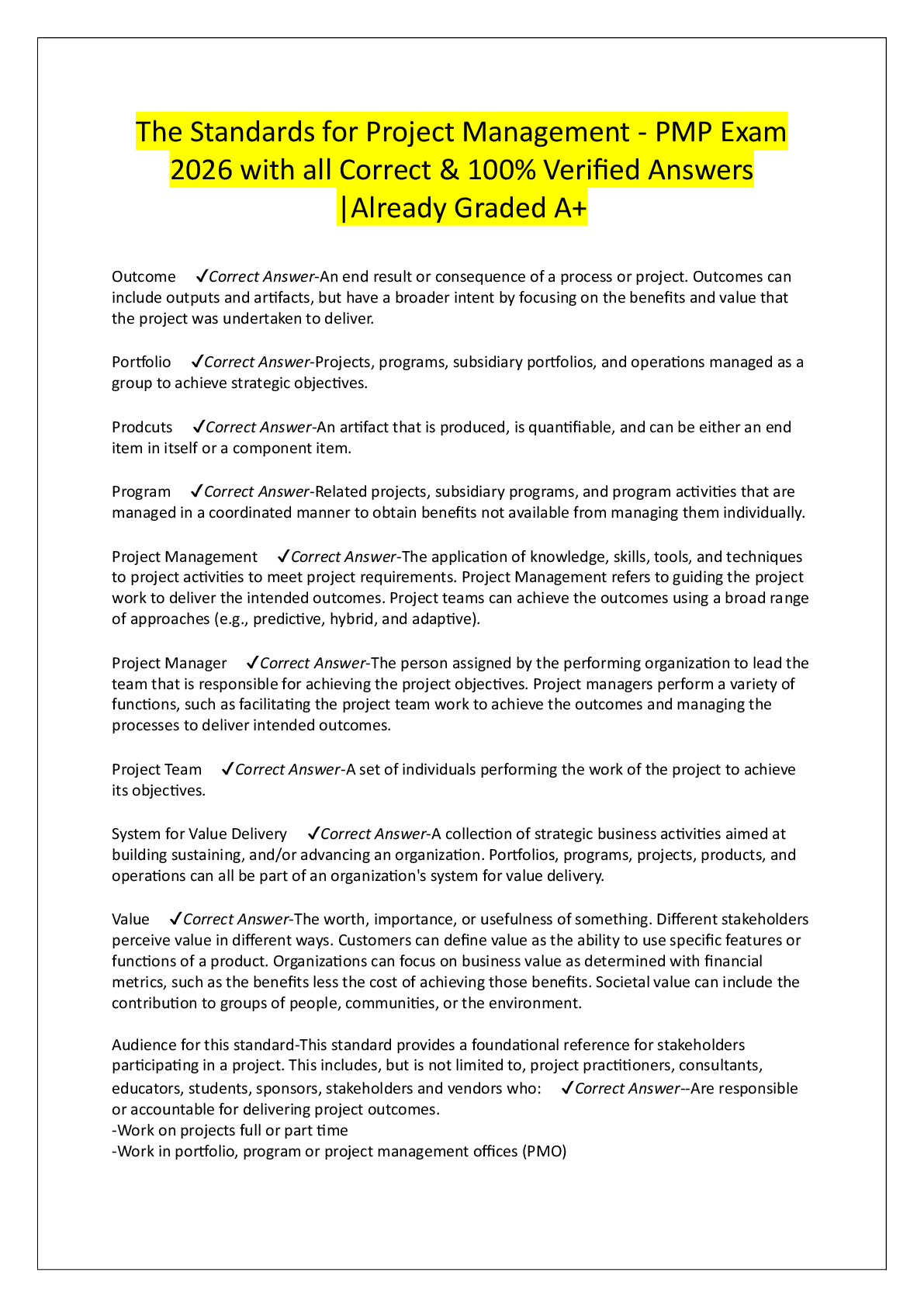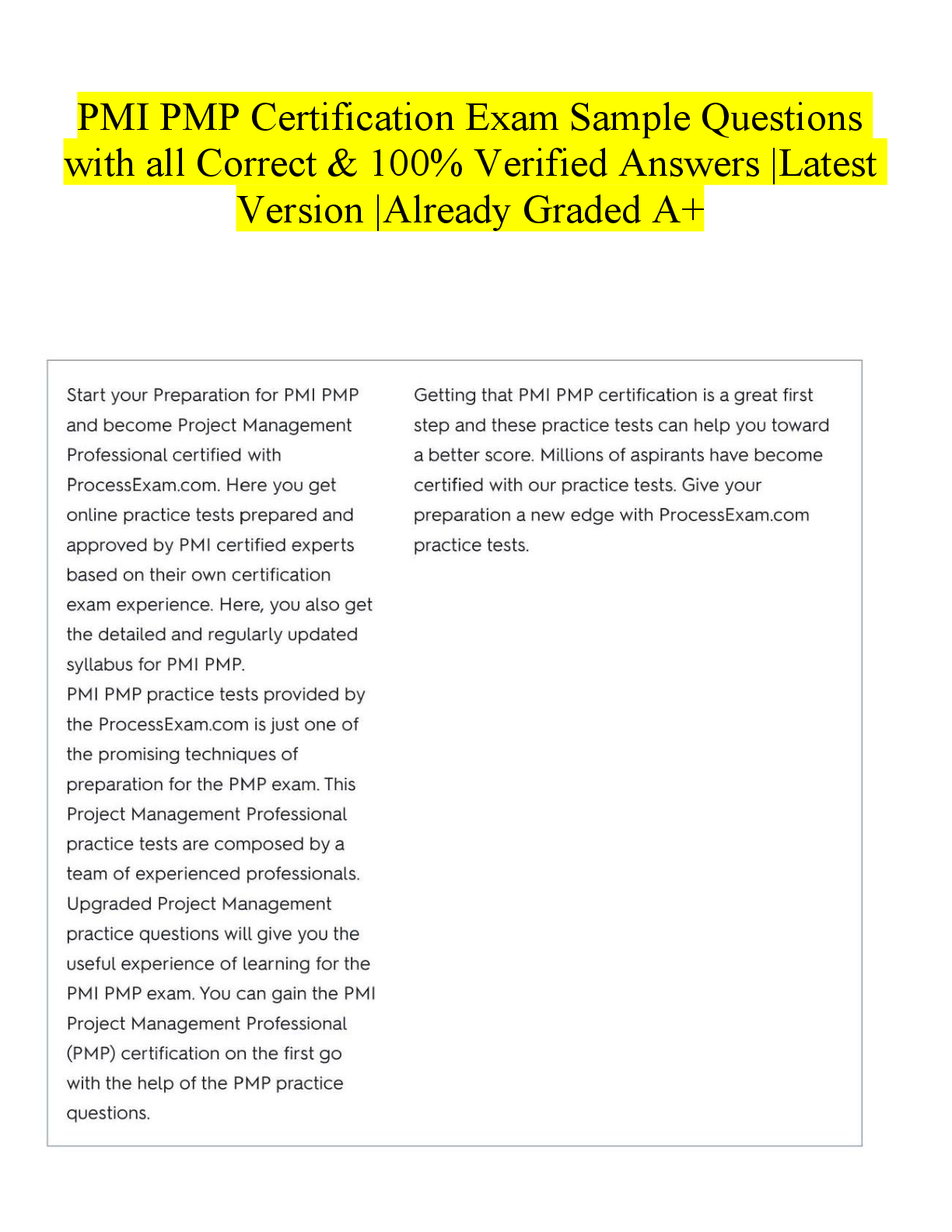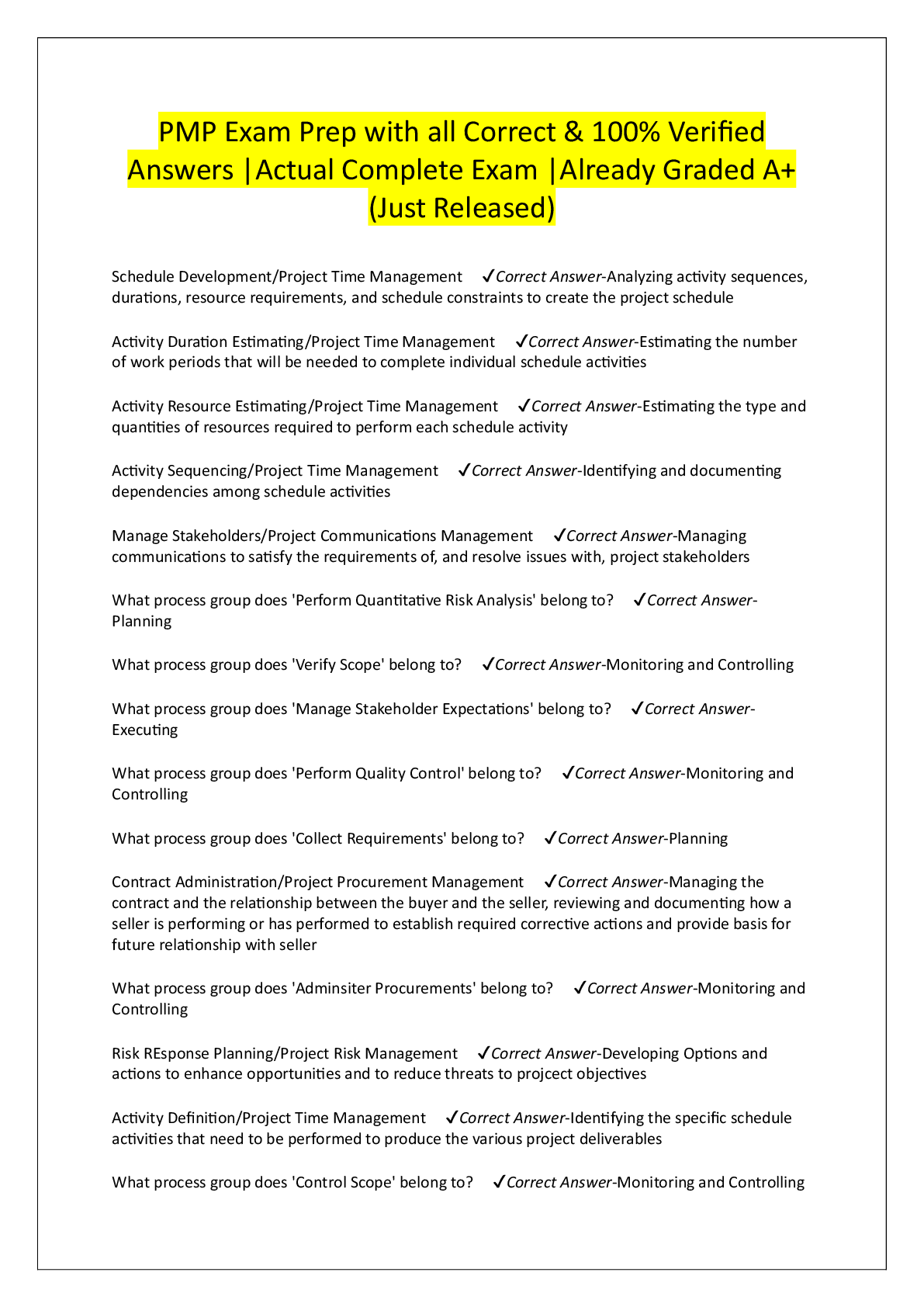Health Care > EXAM > ATI NCLEX-RN COMPREHENSIVE TEST EXAM 1 LATEST 2024/2025 STUDY QUESTIONS AND CORRECT ANSWERS WITH RAT (All)
ATI NCLEX-RN COMPREHENSIVE TEST EXAM 1 LATEST 2024/2025 STUDY QUESTIONS AND CORRECT ANSWERS WITH RATIONALES (GUARANTEED PASS) | RATED A+
Document Content and Description Below
ATI NCLEX-RN COMPREHENSIVE TEST EXAM 1 LATEST 2024/2025 STUDY QUESTIONS AND CORRECT ANSWERS WITH RATIONALES (GUARANTEED PASS) | RATED A+ 1. The nurse is caring for a 65-year-old male client with a ... history of ischemic heart disease who has been admitted to the ICU following a myocardial infarction. The client is currently receiving lidocaine I.V. to manage his ventricular ectopy, which has been persistent. Which of the following factors would be most important for the nurse to consider in relation to the administration of this medication? o A. Decrease in arterial oxygen saturation (SaO2) when measured with a pulse oximeter o B. Increase in systemic blood pressure o C. Presence of premature ventricular contractions (PVCs) on a cardiac monitor o D. Increase in intracranial pressure (ICP) o E. A drop in serum potassium levels as indicated in the latest lab results o F. Observation of a widening QRS complex on the ECG Correct Answer: C. Presence of premature ventricular contractions (PVCs) on a cardiac monitor. In the context of acute myocardial infarction, the priority is to manage life-threatening arrhythmias. Lidocaine is specifically indicated for the treatment of ventricular arrhythmias, such as PVCs, which can be indicative of an increased risk for more serious arrhythmias like ventricular tachycardia or ventricular fibrillation. The presence of PVCs on a cardiac monitor would be the most immediate concern that lidocaine can address in this scenario. While the other factors listed are important to monitor, they are not the primary indications for lidocaine administration in the context of arrhythmia management. 2. A 72-year-old male patient with a history of atrial fibrillation and controlled hypertension has been initiated on warfarin therapy. Upon assessment of the patient’s history, it was revealed that he has a history of peptic ulcer. This patient also has a recent history of a peptic ulcer. Given the client’s medical history and current medication regimen, which of the following instructions should the nurse prioritize when providing discharge teaching? o A. Report incidents of diarrhea o B. Avoid foods high in vitamin K o C. Use a straight razor when shaving o D. Take aspirin for pain relief o E. Monitor for signs of bleeding, such as bruising or black tarry stools o F. Check blood pressure regularly at home o G. Inform all healthcare providers about the anticoagulant therapy Correct Answer: B. Avoid foods high in vitamin K Clients taking warfarin should be educated about maintaining a consistent intake of vitamin K, as it is necessary for the clotting cascade, and warfarin works by inhibiting the effects of vitamin K, thereby reducing the blood’s ability to clot. Sudden increases in vitamin K intake can decrease the effectiveness of warfarin and increase the risk of clot formation. Clients should also be advised to report any incidents of diarrhea (A) since it can affect the absorption of the medication and potentially lead to unstable anticoagulation levels. Using a straight razor (C) is not advised due to the increased risk of bleeding; a safety razor or electric razor would be safer alternatives. Taking aspirin for pain relief (D) is not recommended without a physician’s approval because aspirin can increase the risk of bleeding when taken with an anticoagulant. Monitoring for signs of bleeding (E), checking blood pressure regularly (F), and informing all healthcare providers about anticoagulant therapy (G) are also important instructions for a patient on warfarin therapy, but avoiding foods high in vitamin K is directly related to the effectiveness of the anticoagulant medication and is thus the priority teaching point. 3. In a busy surgical unit, a nurse is preparing to insert an I.V. catheter for a 33-year-old patient who is scheduled for elective surgery and has a notably hairy forearm where the I.V. is to be placed. The patient is allergic to a variety of adhesives and has sensitive skin that is prone to irritation. Given these considerations, how should the nurse manage excess hair at the intended catheter insertion site? o A. Leaving the hair intact o B. Shaving the area o C. Clipping the hair in the area o D. Removing the hair with a depilatory o E. Applying a small amount of water-soluble gel to tame the hair without cutting [Show More]
Last updated: 5 months ago
Preview 5 out of 25 pages

Loading document previews ...
Buy this document to get the full access instantly
Instant Download Access after purchase
Buy NowInstant download
We Accept:

Reviews( 0 )
$16.50
Can't find what you want? Try our AI powered Search
Document information
Connected school, study & course
About the document
Uploaded On
Oct 15, 2024
Number of pages
25
Written in
All
Additional information
This document has been written for:
Uploaded
Oct 15, 2024
Downloads
0
Views
71
